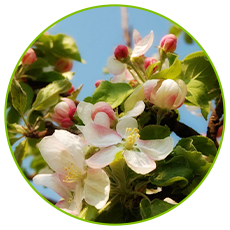Jul . 28, 2024 05:21 Back to list
Investigation of Pollen Usage for Pollination in Apple Orchards and Their Impact on Production
The Role of Pollen in Apple Orchard Pollination
Pollination is a vital process in the life cycle of apple trees, significantly impacting fruit set and yield. In commercial apple orchards, the use of pollen for pollination has gained attention for its ability to enhance pollination efficiency and ensure high-quality fruit production. Understanding the role of pollen—specifically, pollen percentage used for pollination—can illuminate best practices in orchard management and help improve overall apple production.
Apple trees are predominantly self-incompatible, meaning that they require pollen from a different variety to fertilize their flowers. This inability to self-pollinate necessitates careful planning in orchard design and pollen application. Typically, growers plant multiple apple varieties in close proximity to encourage cross-pollination, which is essential for fruit development. However, even with the right varieties, the effectiveness of pollination can be influenced by various environmental factors, and this is where the management of pollen becomes crucial.
Research indicates that the percentage of effective pollen used for pollination can significantly impact the success rates for fruit set. Ideally, an optimal pollen load should be present to maximize fertilization rates. Studies reveal that pollination efficacy can reach its peak when a balanced mix of genetic material from different apple varieties is applied, often recommending a ratio where 10-20% of the pollen comes from a compatible pollinator variety. This strategic approach ensures that the flower stigma receives adequate pollen, leading to successful fertilization and fruit formation.
pollen used for pollination in apple orchards factories

In addition to variety selection, the timing and method of pollen application are critical. Honeybees are the primary pollinators in apple orchards, and their activity directly influences the transfer of pollen from stock trees to flowering blossoms. Registered beekeepers typically place hives throughout the orchard, ensuring a robust bee population is available during the flowering period. Research has shown that a higher density of bee hives correlates with improved fruit set, highlighting the symbiotic relationship between managed pollinators and pollen effectiveness.
However, relying solely on natural pollinators can be unpredictable due to environmental factors such as weather, seasonality, and bee activity. To counter this, some orchards employ controlled pollination techniques. These methods can involve the manual application of pollen or the strategic use of supplemental pollinators, such as bumblebees or even wind, to ensure that adequate pollen reaches the apple flowers. By optimizing the pollen percentage during this process, growers can enhance the likelihood of successful fertilization.
Moreover, advancements in agricultural technology have allowed for innovative strategies to improve pollination efficiency. The use of drone technology is being explored to monitor flower development and bee activity, allowing for timely interventions. Additionally, the development of pollen bags that hold specific ratios of pollen can facilitate targeted application during critical flowering windows.
In conclusion, the significance of pollen percentage in apple orchard pollination cannot be overstated. By leveraging the genetic compatibility of different apple varieties, ensuring the active presence of pollinators, and exploring modern agricultural techniques, apple growers can improve pollination success rates significantly. This ultimately leads to higher yields and better fruit quality, showcasing the intertwined relationship between effective pollination and successful apple production. As the demand for apples continues to grow globally, optimizing these practices will be essential for sustainable and prosperous orchard management.
-
Pollen Peach Tree for Pure Pollination and High-Quality Peach Pollen
NewsJul.30,2025
-
Premium Cherry Pollen for Pure Pollination & Different Types
NewsJul.30,2025
-
Artificial Pollination Solutions for Various Plant Pollen Types
NewsJul.29,2025
-
Artificial Pollination Solutions for All Plant Pollen Types
NewsJul.29,2025
-
Premium Plant Pollen for Pure Pollination & Pollen Block Solutions
NewsJul.29,2025
-
Artificial Pollination Solutions for Efficient Crop Yields
NewsJul.28,2025